Description
Perforating veins are important veins which connect the deep veins of the lower limb with the superficial veins. The perforating veins of the lower limb can be categorized into four main groups: foot, medial leg, lateral leg, and thigh perforating veins.
The leg perforating veins include the posterior tibial perforating veins (posterotibial or Cockett’s perforators), which connect the posterior arch vein to the posterior tibial veins, and the paratibial perforating veins, which connect the great saphenous vein to the posterior tibial veins. The small saphenous vein sends perforating veins to the fibular vein.
The perforating veins shunt blood in one direction, from the superficial veins to the high-pressured deep veins. The perforating veins contain valves to prevent the flow of blood from deep to superficial. However, in the foot, the perforating intercapitular veins tend not to have any valves and the blood flow is bidirectional. In some instances valves may be present and face towards the superficial system, thus, allowing blood to pass from the plantar to dorsal systems (Kelikian, 2012).
Related parts of the anatomy
References
Kelikian, A. S. (2012) Sarrafian's Anatomy of the Foot and Ankle: Descriptive, Topographic, Functional. Wolters Kluwer Health.




